Periodic Trends
Quick Notes
- Periodicity: Recurring patterns in element properties due to repeating electron configurations in the periodic table.
- Key trends: Ionization energy, atomic radius, ionic radius, electron affinity, electronegativity.
- Coulomb’s Law: Attraction between opposite charges increases with greater nuclear charge (more protons) and decreases with larger distance (more shells).
- Effective nuclear charge (Zeff): Net positive charge felt by valence electrons = nuclear charge − shielding. Higher Zeff → stronger attraction → smaller atom, higher ionization energy.
- Ionization energy:
- Increases across a period – more protons, same shielding, stronger pull on electrons.
- Decreases down a group – more shells, greater distance and shielding.
- Atomic radius:
- Decreases across a period – increasing Zeff pulls electrons closer.
- Increases down a group – more shells increase size despite higher nuclear charge.
- Ionic radius:
- Cations smaller than atoms (less electron repulsion).
- Anions larger than atoms (more electron repulsion).
- Across Period 3: Na+ → Al3+ decrease; P3− → Cl− decrease; big jump between cations and anions.
- Electron affinity:
- More negative (favorable) across a period – greater nuclear attraction for extra electron.
- Less negative down a group – electrons added further from nucleus.
- Exceptions: filled sublevels (e.g., Mg, Ar) have low affinity.
- Electronegativity:
- Increases across a period – smaller size, higher Zeff.
- Decreases down a group – more shells, weaker attraction.
- Highest = F (4.0), lowest = Fr (~0.7–1.0).
- Trends explained by electron configuration, nuclear charge, shielding, and distance of valence electrons from nucleus.
Full Notes
The periodic table is more than just a list of elements — it is structured to show repeating patterns in chemical and physical properties, known as periodicity. These patterns are explained by electron configurations and the arrangement of electrons in energy levels and sublevels.
Why Periodicity Occurs
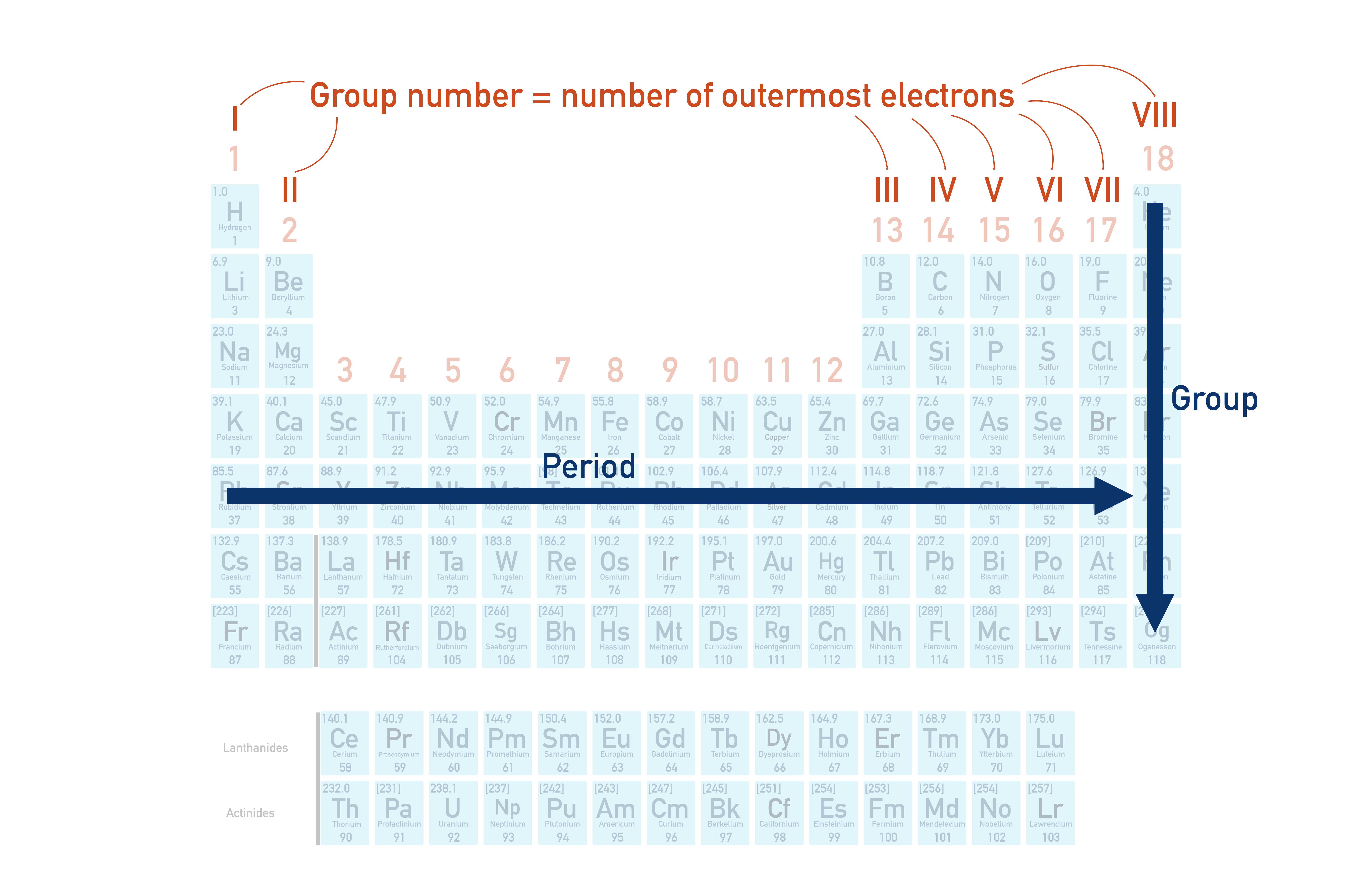
Elements in the same group (vertical column) have similar outer electron configurations, giving them similar chemical properties.
Across a period (horizontal row), the number of protons and electrons increases, affecting atomic properties in predictable ways.
These trends are largely due to:
- The number of electron shells (increasing down a group)
- The effective nuclear charge (Zeff) experienced by the outermost electrons
- Shielding by inner electrons
- The strength of the attraction between the nucleus and valence electrons
Coulomb’s Law and Periodic Trends
Coulomb’s Law:
 F ∝ (q1 × q2) / r2
F ∝ (q1 × q2) / r2
Where F is the electrostatic force, q1 and q2 are the charges, and r is the distance between them.
As nuclear charge (number of protons) increases, the attraction to electrons increases, unless offset by shielding.
Ionization Energy – the energy required to remove an electron from an atom
Increases as a trend* across a period (left to right)

Decreases down a group (top to bottom)
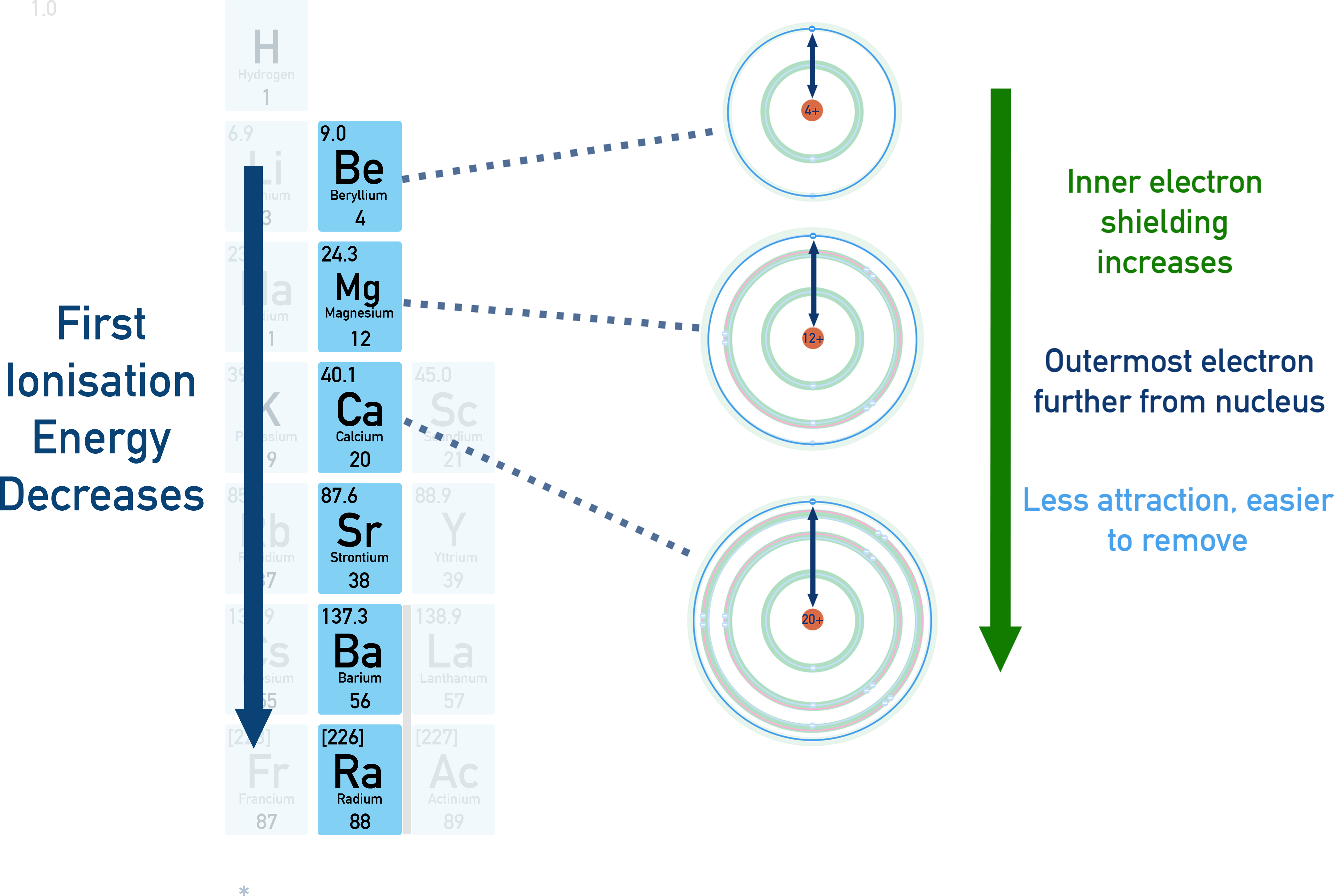
Explanation:
Across a period, more protons = stronger attraction = harder to remove an electron.
Down a group, more shells = more distance and more shielding = easier to remove an electron.
Atomic Radius – distance from the nucleus to the outermost electron


Decreases across a period
Increases down a group
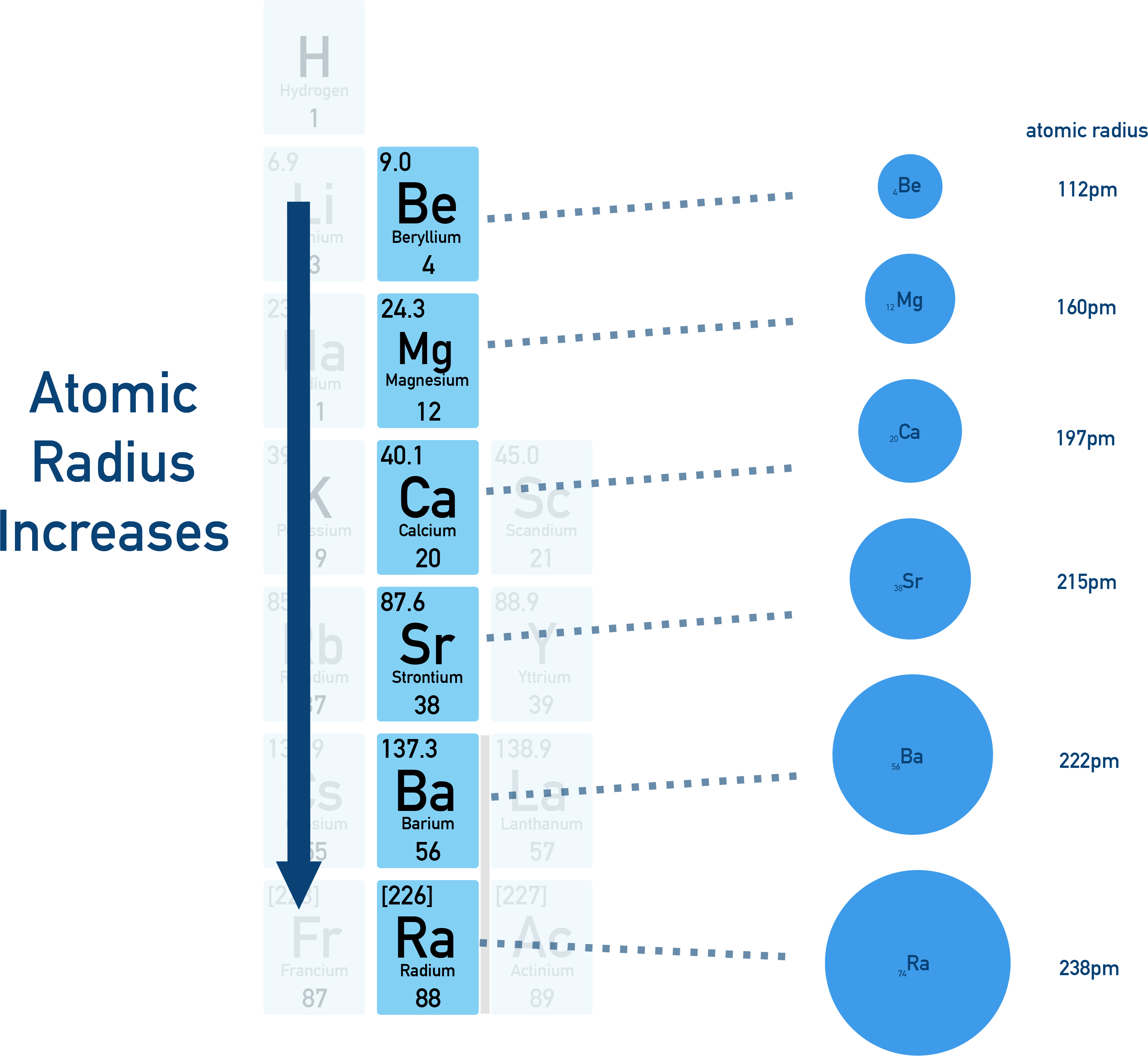
Explanation:
Across a period, increasing nuclear charge pulls electrons closer.
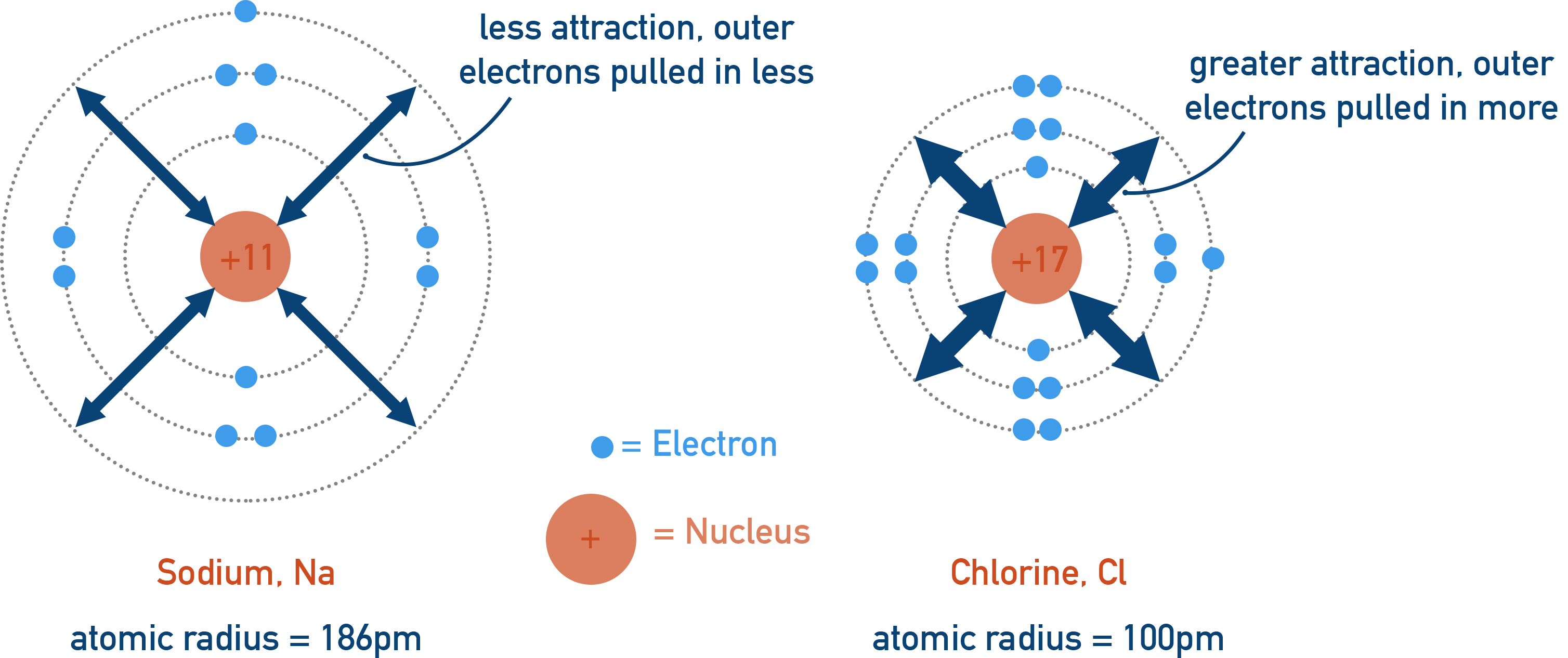
Down a group, new energy levels are added, making the atom larger.
Ionic Radius – size of an ion
- Cations (positive ions) are smaller than their atoms (less electron repulsion).
- Anions (negative ions) are larger than their atoms (more electron repulsion).
ExampleIonic Radius Trend Across a period

Metals (Na+, Mg2+, Al3+) lose electrons and form smaller ions than their atoms. The ionic radius decreases from Na+ to Al3+ as the nuclear charge increases whilst the number of electrons stays the same (the ions all have the same electron configuration), meaning greater attraction from nucleus pulls outer-shell of ion more tightly, decreasing ionic radius.
Non-metals (P3−, S2−, Cl−) gain electrons and form larger ions than their atoms.
There's a noticeable jump in ionic radius between Al3+ and P3−, due to the switch from cations to anions.
Note that Silicon (Si) and Argon (Ar) don’t readily form ions.
Electron Affinity – energy change that occurs when a gaseous atom gains an electron
- Becomes more negative across a period (more favorable).
- Becomes less negative (or positive) down a group.
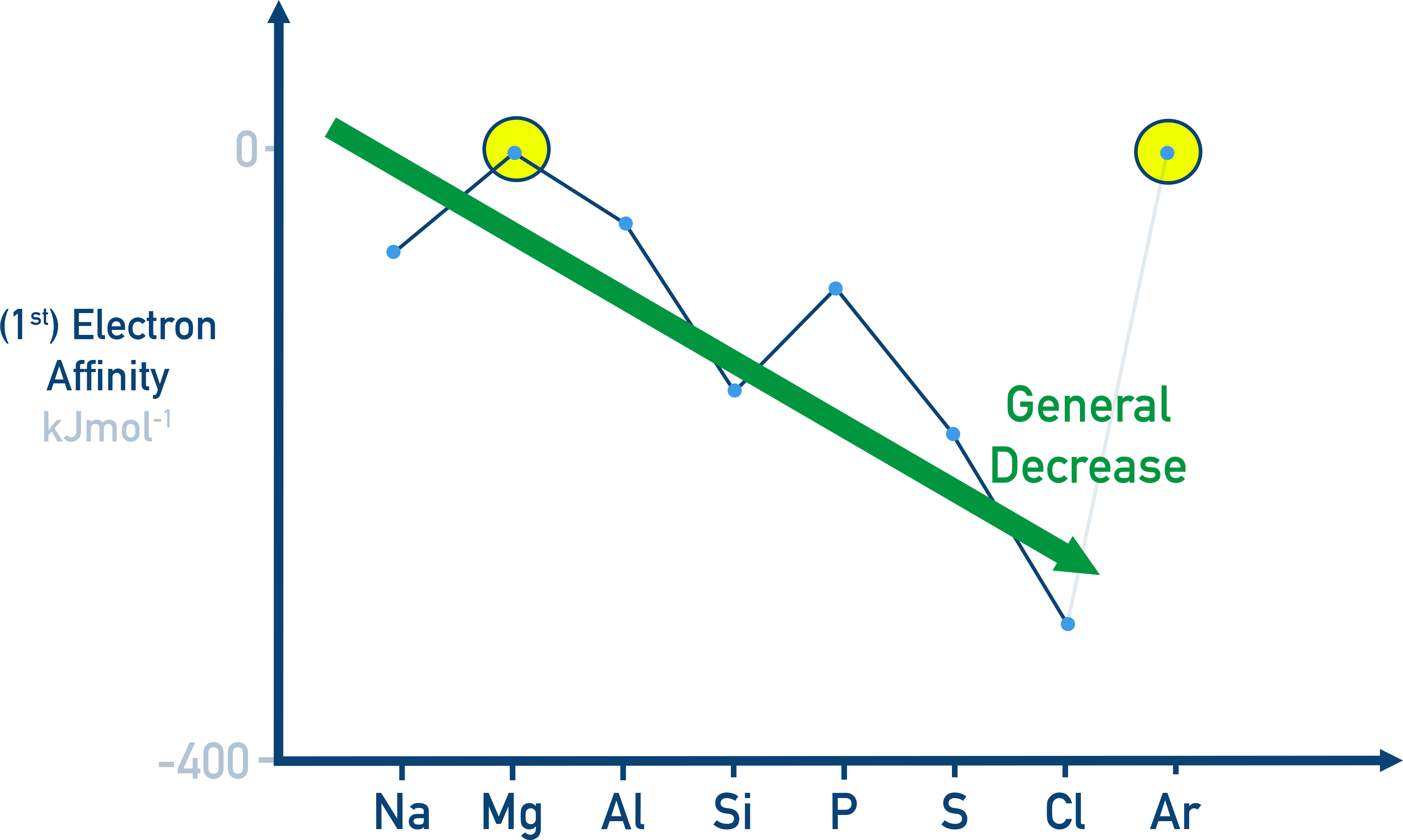
Note: There are exceptions to the trend. Both Mg and Ar have electron affinity values close to 0 kJ mol−1, indicating that they do not easily gain electrons. This is because they already have filled sublevels, so incoming electrons experience little attraction to the nucleus.
Electronegativity
Electronegativity is the power of an atom to attract electrons to itself.
It is a relative value and does not have units.
The most commonly used scale is the Pauling scale, where:
- Fluorine (F) = 4.0 (most electronegative)
- Group 1 metals = ~0.7 to 1.0 (least electronegative)
As a general trend
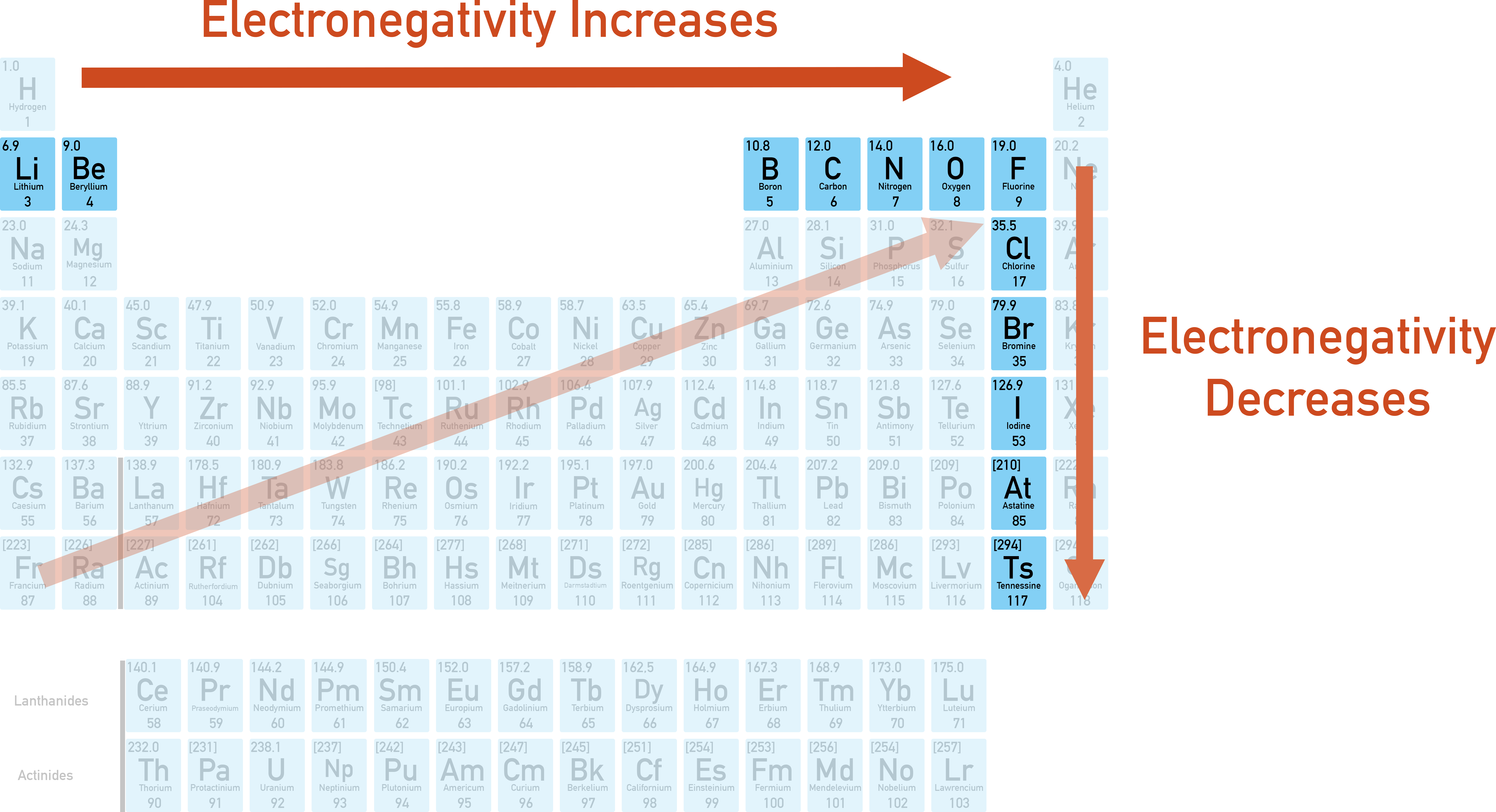
Across a period (left to right):
Electronegativity increases.
Atomic radius decreases and nuclear charge increases.
Shielding stays roughly the same.
Down a group (top to bottom):
Electronegativity decreases.
Atomic radius increases and shielding increases.
Outer electrons are further from the nucleus and less strongly attracted.
Highest: Fluorine
Lowest: Francium
Effective Nuclear Charge (Zeff)
The effective nuclear charge is the net positive charge felt by an electron after accounting for shielding by inner electrons – it helps explain periodic trends outlined on this page, like atomic size and ionization energy.

Zeff = actual nuclear charge – shielding effect from inner electrons
- As Zeff increases, electrons are more tightly held.
- Higher Zeff means a smaller atomic radius and higher ionization energy.
- Lower Zeff means larger radius atomic radius and lower ionization energy.
Which has a higher first ionization energy: sodium (Na) or magnesium (Mg)?
- Recall Definitions
First ionization energy is the energy required to remove the outermost electron from a neutral atom in the gas phase.
This depends on effective nuclear charge (Zeff) and distance of the electron from the nucleus. - Compare Atomic Structures
Sodium (Na): 1s2 2s2 2p6 3s1
Magnesium (Mg): 1s2 2s2 2p6 3s2
Both atoms have electrons in the same outer shell (n = 3). - Analyze Zeff
Mg has one more proton than Na (12 vs. 11), but both have the same number of inner (core) electrons.
This means Mg has a greater Zeff — its nucleus pulls on the valence electrons more strongly. - Apply Reasoning
Because Mg holds its outer electrons more tightly, it takes more energy to remove one.
Answer: Magnesium has a higher first ionization energy than sodium.
Summary
- The periodic table is structured around predictable trends in atomic properties. These trends arise from differences in electron configurations, nuclear charge, and shielding.
- Understanding periodicity allows chemists to predict chemical behavior and compare elements, even when experimental data is not available.
- Key trends to remember:
- Ionization energy: ↑ across a period, ↓ down a group
- Atomic radius: ↓ across a period, ↑ down a group
- Electron affinity: more negative across a period
- Electronegativity: ↑ across a period, ↓ down a group
- Use Coulomb’s Law, shell model, and shielding to explain these trends.
